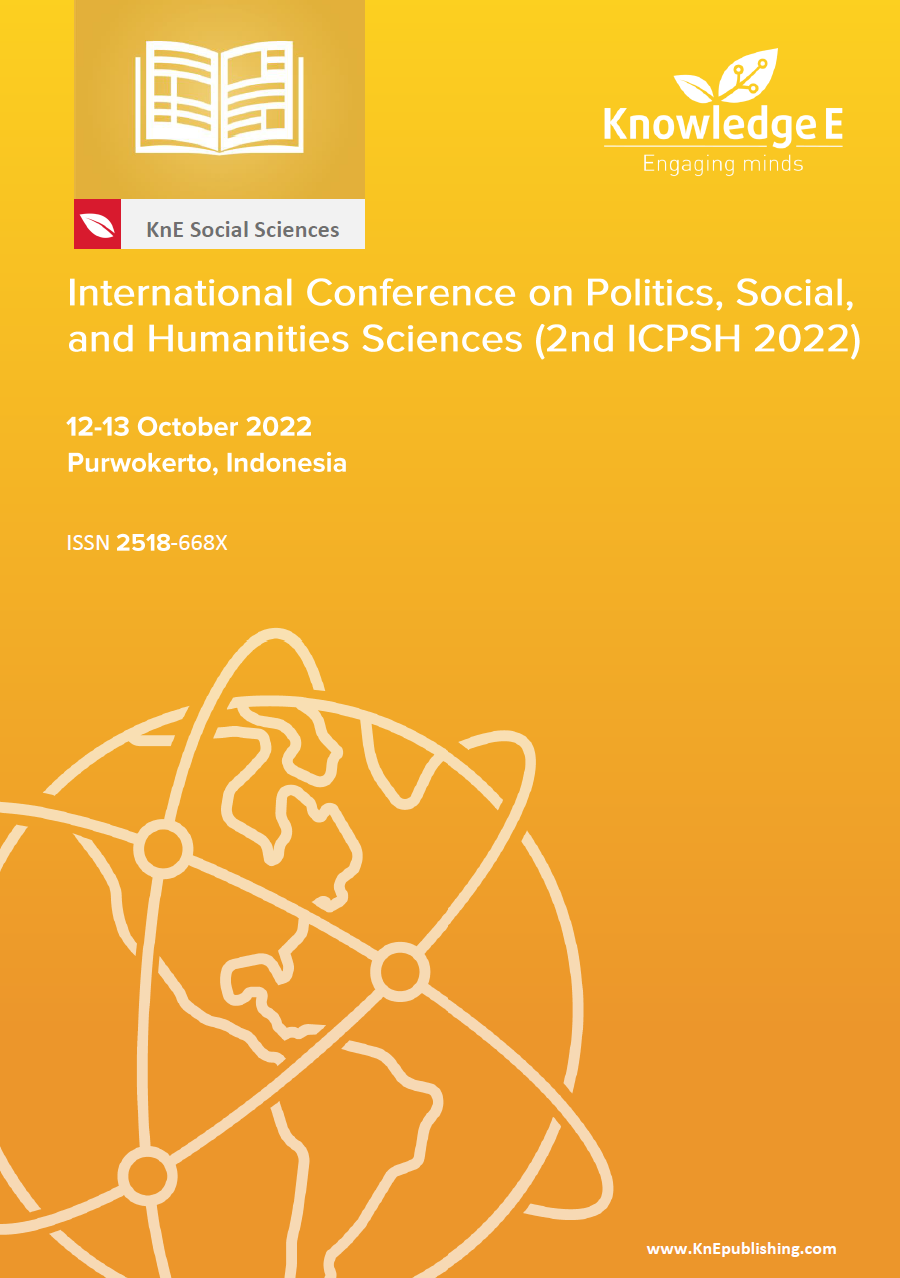Persuasive Communication Strategy of Village Family Planning Volunteers in Bergas, Semarang
DOI:
https://doi.org/10.18502/kss.v8i3.12815Abstract
Village Family Planning, also known as Kampung KB, was formed by the Indonesian National Family Planning Coordinating Board (BKKBN). This study focused on the Kampung KB area in Bergas Semarang that grew from ‘primary’ to ‘developing.’ Since 2018, the progress is marked by the data on the increase in couples carrying out family planning. In September 2020, the number of fertile age couples (PUS) who already have two children but have not participated in family planning (TIAL) was as many as 43 couples. Meanwhile, the latest data in August 2022 showed a decline in TIAL of 9 couples. This study aimed to determine the persuasive communication strategies of family planning volunteers in Kampung KB Bergas, Semarang. Qualitative descriptive research methods and Elaboration Likelihood (ELM) theory were used to explain the persuasive communication strategies used by volunteers. The study results showed they used a persuasive communication strategy with a central route in ELM theory. In addition, the COVID-19 pandemic has become a persuasive communication strategy in the post-pandemic era with a fear appeal approach that encourages increased use of contraceptives - one of the family planning village programs.
Keywords: COVID-19, elaboration likelihood, family planning village, fear appeals
References
Sari M. Family Planning Service [Internet]. https://kampungkb.bkkbn.go.id/. 2017. Available from: https://kampungkb.bkkbn.go.id/kampung/1381/intervensi/ 45128/pelayanan-kb
Family Planning Service. Available from: https://kampungkb.bkkbn.go.id/kampung/ 1381/intervensi/45128/pelayanan-kb
Ardiana I, Ekoriano M, Fathonah S. Universal health coverage 2019 in Indonesia: the integration of family planning services in the current functioning health system [Internet]. J Popul Soc Stud. 2019;27(3):247–65.
Utomo ID, Arsyad SS, Hasmi EN. Village family planning volunteers in Indonesia: their role in the family planning programme. Reprod Health Matters. 2006 May;14(27):73– 82.
Indonesian National Family Planning Coordinating Board (BKKBN). Kampung Keluarga Berkualitas [Internet]. Available from: https://kampungkb.bkkbn.go.id/tentang
Dinas Pengendalian Penduduk dan Keluarga Berencana Kota Semarang. Kampung KB Kota Semarang [Internet]. Available from: https://disdaldukkb.semarangkota.go.id/pages/kampung-kb-kota-semarang
Laju Pertumbuhan Penduduk Kota Semarang 0,25%, Terendah dalam 20 Tahun Terakhir [Internet]. Gatra.com; 2002, March 15. Available from: https://www.gatra.com/news-538264-Gaya%20Hidup-laju-pertumbuhan-pendudukkota-semarang-025-terendah-dalam-20-tahun-terakhir-.html
Population Density In Semarang. Central Bureau of Statistics/ Badan Pusat Statistik Kota Semarang. Available from: https://semarangkota.bps.go.id/indicator/12/48/1/kepadatan-penduduk.html
Overview of Kampung KB Bergas [Internet]. Indonesian National Family Planning Coordinating Board (BKKBN). Available from: https://kampungkb.bkkbn.go.id/kampung/9822/bergas
Puspita DR, Dharma P, Hikmah N, Rosyadi S, Isna A. The Participation Model of Kampung KB in Prevention of COVID-19 in Banyumas Regency, Indonesia. Int J Curr Sci Res Rev. 2022;05(06):2033–8.
Rakhmat J. Metode Penelitian Komunikasi. Bandung: PT Remaja Rosdakarya; 2009.
Sayidah N. Metodologi Penelitian Disertai Dengan Contoh Penerapannya Dalam Penelitian. Jakarta: Zifatama; 2018. 153 pp.
Littlejohn SW, Foss KA, Oetzel JG. Theories of Human Communication. 11th ed. Illinois: Waveland Press, Inc; 2017.
Liliweri A. Komunikasi Antarpersonal. Jakarta: Pernamedia Gruop; 2014.
Febrianti AA. Hubungan Kualitas Pelayanan Keluarga Berencana Terhadap Kelangsungan Pemakaian Intra Uterine Device (iud). Di Kecamatan Gajahmungkur Kota Semarang; 2003.
Littlejohn SW, Foss KA. Teori Komunikasi. Jakarta: Salemba Humanika; 2012.
Griffin E. A First Look at Communication Theory. 8th ed. New York: McGraw-Hill; 2012.
O’Rourke JS. Management Communication. 5th ed. Pearson Education Limited; 2014.

